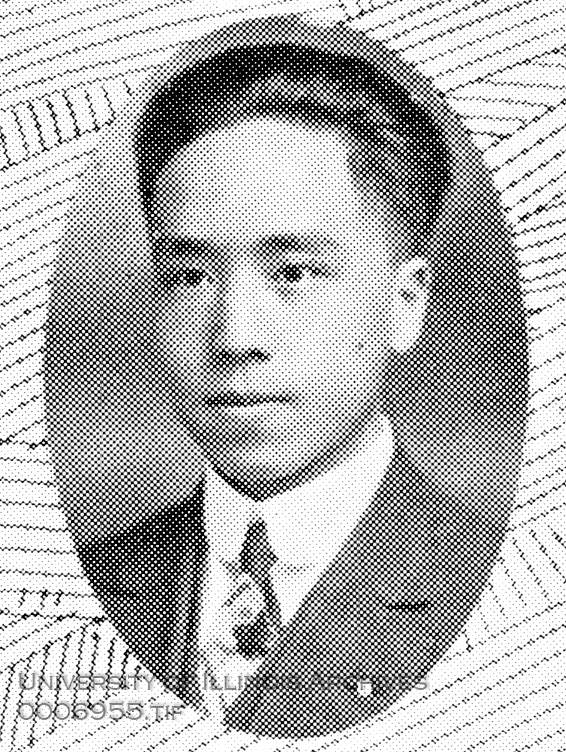The first curriculum of the School of Architecture is presented to the Illinois Industrial University Board of Trustees by Regent John Milton Gregory. In 1878, this institution would be renamed University of Illinois.
Nathan Clifford Ricker, the first student in this curriculum, arrives in Urbana, IL, beginning our proud tradition of architecture education. Ricker became the first graduate of an architecture program in the United States in March 1873.

Following graduation and a six-month tour of Europe, Ricker becomes the head of the Department of Architecture. Ricker's travels abroad influenced the architecture curriculum at Illinois and his work throughout his career. Under Ricker, the architecture curriculum at Illinois followed a German polytechnic method, diametrically opposed to the more popular French system being taught in Paris at the Ecole des Beaux Arts, a system followed at MIT and the majority of new American architecture schools created around that time.
Born in Metamora, Illinois in 1849, she received a Certificate in Architecture in 1878 and a Bachelor of Science in Architecture in 1879. She was active in student government and several all-female societies at the university. In 1887 she joined her former Illinois classmate Robert Farwell Whitham to offer engineering, drafting, blueprint, and other services under the company name Whitham & Page, with Whitham serving as civil engineer and city surveyor and Page as draftsman. A rare hand-colored map of Olympia and surroundings dated 1890, one of the earliest cadastral maps of the area, testifies to the precise draftsmanship that Whitham and Page produced during this period.

Nathan Ricker introduces a four-year curriculum in architectural engineering, the first such curriculum in the country.
Following graduation, Bailey worked in firms in his hometown of Kewanee, Illinois, and in Champaign. In 1905, Bailey was appointed head of the Architecture Department at the Tuskegee Institute in Alabama, where he also supervised the planning, design, and construction of several campus buildings. In 1924, he moved his office to Chicago, where he became the first licensed African American architect in the State of Illinois.

In the early 20th century, many Chinese students came to study at the University of Illinois through the Boxer Indemnity Scholarship Program. One of these students, Tsin Chuang, Class of 1914, became one of the earliest Chinese graduates of any school of architecture in the United States. Upon his return to China in 1914, he became the primary university architect for the newly created Tsinghua College (later renamed Tsinghua University) in northwest Beijing.

One year later, she earned a master’s degree in city planning and housing from the University of Illinois. Following graduation, she broke through both gender and race barriers when she was hired by the Chicago Housing Authority. She went on to earn a master’s degree in architecture from Columbia University in 1945. During her career, she worked with noted architects Edward Durell Stone and Marcel Breuer, playing a major role in the design of buildings such as the UNESCO United Nations headquarters in Paris. Green received her architectural registration in the State of Illinois in 1942, and is credited as the first African American woman to receive a license to practice architecture in the United States.

Significant alumni figures include:
- Francis J. Plym, founder of the Kawneer Company.
- Walter Burley Griffin, in partnership with Marion Mahoney Griffin, architect of the first plan for Canberra, Australia.
- Temple Hoyne Buell, the father of the modern shopping mall.
- Charles Luckman and William Perrera, who helped Walt Disney shape his vision for Disneyland.
- Max Abramovitz, designer of the United Nations Building, the Lincoln Center, and the University of Illinois’ Krannert Center for Performing Arts and State Farm Center.
- Lebbeus Woods, noted architectural theorist.
Notable contemporary alumni have continued the strong Illinois tradition of influential and holistic design around the globe. These distinguished alumni include Ralph Johnson, Carol Ross Barney, the late Cesar Pelli, John Zils, Dina Griffin, Jeanne Gang, and Steve Weindel.
As we continue to build on our unique history, we believe that great architectural expressions grow from the synthesis of technical knowledge and aesthetic considerations. In a time when a new formalism represents the avant-garde, we, like Nathan Ricker, look beyond current fashion, striving to leverage technical virtuosity in the service of performative design, aesthetic expression, and service to society.